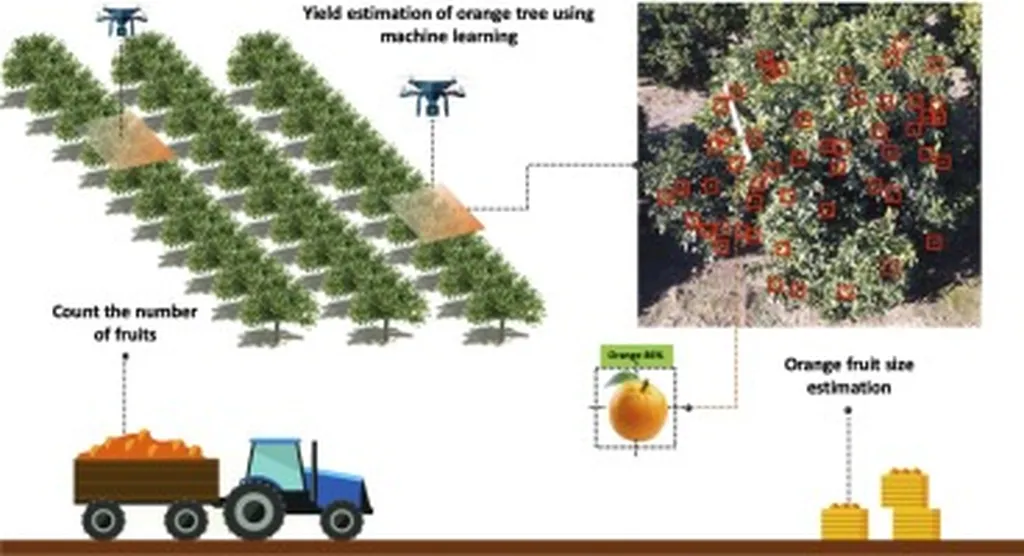In the heart of China’s Guilin University of Technology, a breakthrough in precision agriculture is unfolding, promising to reshape how we predict citrus yields and, by extension, how the energy sector might optimize its resources. Menglin Zhai, a researcher at the College of Geomatics and Geoinformation, has led a study that combines multi-growth period data with an improved YOLOv8 model to estimate citrus fruit yields earlier and more accurately than ever before.
The study, published in the journal ‘Sensors’ (translated from Chinese as ‘传感器’), addresses a critical challenge in agriculture: early crop yield prediction. Accurate detection of citrus characteristics during flowering, green fruiting, and ripening stages is crucial for sustainable fruit production. Zhai’s team has developed a new network model, YOLOv8-RL, which leverages citrus multigrowth period characteristics to provide a more comprehensive analysis.
“Combining multi-growth period data for crop analysis is of great significance for crop growth detection and early yield estimation,” Zhai explains. The improved model reduces the number of parameters by 50.7% and decreases floating-point operations by 49.4%, making it lightweight and efficient. With a model size of just 3.2 MB, it achieves an average recognition rate of 95.6% for citrus flowers, green fruits, and orange fruits, and an impressive inference time of only 2.3 milliseconds.
The implications for the energy sector are substantial. Accurate yield predictions can help energy companies optimize their supply chains, reduce waste, and improve resource allocation. “The two estimation models constructed on the basis of the new network had coefficients of determination R² values of 0.91992 and 0.95639, respectively,” Zhai notes. This high level of accuracy translates to a prediction error rate of just 6.96% for citrus green fruits and an average error rate of 3.71% for orange fruits.
The study’s findings provide a theoretical basis and technical support for early prediction of fruit yield in complex environments. As the world moves towards more sustainable and efficient agricultural practices, this research offers a glimpse into the future of precision agriculture. By integrating advanced technologies like lightweight networks and multigrowth period prediction, we can expect to see significant advancements in crop yield estimation and, consequently, in the energy sector’s ability to meet global demands.
Zhai’s work not only pushes the boundaries of what’s possible in agriculture but also sets a new standard for how technology can be harnessed to create a more sustainable and efficient future. As we continue to explore the potential of these innovations, one thing is clear: the future of agriculture is bright, and it’s powered by cutting-edge research like this.

